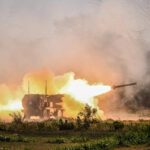
In a recent interview with RBC-Ukraine, Major General Vadym Skibitskyi, Deputy Chief of Defence Intelligence of Ukraine, provided insights into a significant surge in the recruitment numbers of the Russian Armed Forces. Contrary to covert mobilization, this surge is characterized by a daily influx of approximately 1,000 individuals, sparking concerns and raising questions about the motivations behind this recruitment drive.
Driving Force Behind Russian Army Enlistments
Skibitskyi highlighted a pivotal factor fueling this recruitment surge: economic motivations, particularly in regions grappling with low incomes and scarce employment opportunities. Testimonies from Russian prisoners of war underscored a trend where individuals, driven by financial incentives, voluntarily joined the military. This sheds light on a complex intersection of economic factors influencing recruitment patterns within Russia.
Delving into the specifics of the Russian Armed Forces, Skibitskyi outlined the intricacies of salary structures. Servicemen receive varied compensations depending on factors such as the unit’s location and proximity to the front line. Notably, those on the firing line are granted an additional 8,000 rubles per day, contributing to a monthly income ranging from RUB 220,000 to 250,000 for those actively engaged in hostilities on the first line of contact.
Current Landscape and Future Prospects
Skibitskyi provided a comprehensive analysis of Russia’s ongoing mobilization activities. While the current surge primarily aims at replenishing losses, he hinted at the broader potential for mobilization, contingent on the political landscape in Russia. The readiness for such activities is evident in intact conditions for accounting military personnel and strategic reserve formation, signifying a complex and evolving situation.
[adinserter name="Two"]The representative of Ukraine’s Defense Intelligence emphasized the strategic implications of ongoing mobilization efforts in Russia. Beyond the immediate goal of replenishing losses, he pointed to creating a robust strategic reserve with all the necessary conditions in place. Whether Putin will escalate mobilization before elections remains uncertain, leaving room for future developments that may reshape the armed forces’ mobilization needs.
[adinserter name="Three"]Conclusion
In conclusion, the surge in daily recruits joining the Russian Armed Forces, motivated predominantly by economic factors, paints a complex picture of military enlistment dynamics. As the landscape continues to evolve, with potential implications for Russia’s armed forces and geopolitical stability, unanswered questions linger regarding this recruitment surge’s extent and future trajectory.
[adinserter name="Four"]Frequently Asked Questions (FAQs)
-
Why is there a significant surge in daily recruits joining the Russian Armed Forces, according to Ukraine’s Defense Intelligence?
Ukraine’s Defense Intelligence attributes the surge to economic motivations, particularly in regions with low incomes and scarce employment opportunities, revealing a complex intersection of financial incentives influencing recruitment patterns.
-
What are the specific salary structures outlined by Major General Vadym Skibitskyi for the Russian Armed Forces?
Depending on factors such as the unit’s location and proximity to the front line, servicemen receive varied compensations. Notably, those on the firing line receive an additional 8,000 rubles per day, contributing to a monthly income ranging from RUB 220,000 to 250,000 for those actively engaged in hostilities on the first line of contact.
-
What strategic implications does Ukraine’s Defense Intelligence associate with Russia’s ongoing mobilization efforts?
Beyond replenishing losses, there are strategic implications, including the creation of a powerful strategic reserve. Major General Skibitskyi points to the readiness for mobilization activities in Russia, with intact conditions for accounting military personnel and strategic reserve formation. The extent of this mobilization and its future trajectory remain uncertain, raising questions about its potential impact on geopolitical stability.






